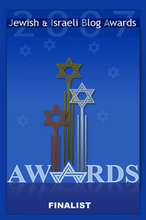The Brisker Rov[1] offers seven proofs to the idea that conversion to Judaism was possible even before the Sinaitic Revelation. The Talmud considers Esau an apostate Jew[2], which shows that his family already had the halachik status of Jewish even before receiving the Torah at Mount Sinai. He says that the Beis Din of Shem, son of Noah, decreed[3] that a Jewess who engaged in relations with a non-Jew is punished with death. Therefore, the reason why Tamar was liable for execution[4] could only be understood if the concept of conversion existed before Mount Sinai, for otherwise she was not a Jewess and should not have been executed because she was unmarried. Furthermore, while posing as a prostitute, Tamar convinced Judah to lie with her by saying that she was a "convert," [5] which clearly shows that such a model for conversion had already existed by that time.
The Torah mentions the Paschal Offering (Korban Pesach) of a convert, when it says, "When a proselyte lives amongst and offers the Pascal [sacrifice]…[6]." Nachmanides[7] understands that this verse refers to the Paschal Offering brought by the Jews whilst in Egypt, not the Paschal Offering brought by later generations. Therefore, the Brisker Rov explains, Nachmanides understood that even in the time of the Exodus from Egypt, which predated the Sinaitic Revelation, there was already the concept of conversion to Judaism. Similarly, the Tosefta says[8] that even for the Pascal Offering brought in Egypt, one must have immersed his slaves in the Mikvah in order to be allowed to take part in the sacrificial meats. The father of the Brisker Rov, Rabbi Chaim Soloveitchik (1853-1918) understands[9] that the immersion of one's slaves into the Mikvah is an act of quasi-conversion. Accordingly, even in Egypt, the quasi-conversion of one's slaves was required in order for one to be allowed to eat the Paschal meat, which shows that conversion was possible even before the receiving of the Torah at Mount Sinai. The same proof is offered from the fact that Abraham was not allowed to marry a full slave[10], a quasi-convert, which is a status that could only be circumvented through full conversion.
The Talmud says[11] that when Bithiah descended to the river to bathe[12], she was cleansing herself from the idolatry of her father's household[13]. Rashi explains[14] that the Talmud means that Bithiah converted to Judaism by immersing herself into the Nile River. From here, the Brisker Rov brings conclusive evidence that conversion to Judaism existed even before the revelation at Mount Sinai. However, Rabbi Naphtali Tzvi Yehuda Berlin (1817-1893) argues[15] with Rashi and says that Bithiah did not convert when she immersed in the river, rather she was merely cleansing herself from the sin of idolatry of her father's household. He writes that she was merely purifying/cleaning herself as a form of repentance in the fashion of sinners, who clean themselves as part of their penitence[16]. According to Rabbi Berlin that her intention in bathing was merely hygienic with religious symbolism, and not to convert, the Brisker Rov has no proof from Bithiah that conversion existed before the Torah's reception at Mount Sinai. The son of the Brisker Rov, Rabbi Berel Soloveitchik, proved[17] that Bithiah must have converted. First of all, he says that it is illogical to assume that the salvation and redemption of the Jewish nation in Egypt came about through a gentile, so since Bithiah was clearly an essential heroine in the Exodus tale, she must have converted to Judaism. Secondly, the Torah specifically makes a point of mentioning the "mercy" and "pity"[18] which Bithiah had on the baby Moses; such pity and mercy are exclusively Jewish traits[19], so Bithiah must have been Jewish.
[1] Chiddushei HaGriz to Sotah 8b
[2] Kiddushin 18a
[3] Avoda Zara 36b
[4] Genesis 38:24
[5] Sotah 10a
[6] Exodus 12:48
[7] Ramban to Numbers 9:14
[8] Pesachim, Ch. 8
[9] Chiddushei Rabbeinu Chaim HaLevi, Laws of Forbidden Intercourse 13:12
[10] Yevamos 100b
[11] Sotah 12b
[12] Exodus 2:5
[13] Rabbi Chanoch Zundel ben Yosef (d. 1867) explains (Eitz Yosef to Sotah 12b) that the Torah says she bathed "on the river." He explains this means "about the river", the Nile being the primary object of idolatrous worship in Egypt, as Rashi writes to Exodus 7:17. Alternatively, Rabbi Yosef Chaim of Baghdad (1832-1909) explains (Benayahu to Sotah 12b) that the letters after each pronounced letter in the Hebrew used for "river" make up the word "sheep", which was also an Egyptian deity (see Rashi to Genesis 46:34).
[14] To Sotah 12b
[15] Chiddushei Netziv: Meromei Sadeh to Megillah 13a
[16] See Shulchan Aruch, Yoreh Deah, §268
[17] As quoted in the new print of Chiddushei HaGriz to Sotah 12b
[18] See Exodus 2:6
[19] As stated in Yevamos 79a
Wednesday, March 28, 2007
Converting in Egypt
Posted by
Reuven Chaim Klein
at
9:36 AM
![]()


 orcid.org/0000-0001-9317-3282
orcid.org/0000-0001-9317-3282

No comments:
Post a Comment